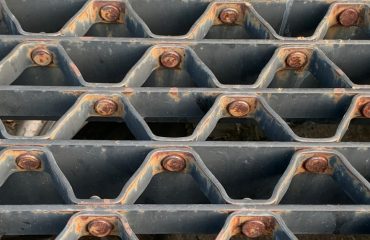Choosing the right pipe is crucial for the success of any energy project. From oil and gas pipelines to geothermal energy systems and renewable energy infrastructure, the selection process demands careful consideration of numerous factors. A poorly chosen pipe can lead to leaks, failures, increased maintenance costs, and even environmental disasters. This comprehensive guide will walk you through the key aspects of selecting the optimal piping system for your specific needs.
1. Material Matters: Selecting the Right Pipe Material for Your Energy Project
The material of your pipe is the foundational element of its performance and longevity. The choice depends heavily on the fluid being transported, the operating pressure and temperature, the environmental conditions, and the project’s budget. Common materials include:
- Steel: A widely used material due to its high strength, durability, and relatively low cost. Different grades of steel (carbon steel, stainless steel, alloy steel) offer varying corrosion resistance and temperature tolerances. Carbon steel is suitable for many applications but requires corrosion protection in harsh environments. Stainless steel offers superior corrosion resistance but comes at a higher cost.
- Plastic (PVC, HDPE, PE): Lightweight and corrosion-resistant, plastic pipes are ideal for lower-pressure applications, such as water distribution in renewable energy projects or chemical transport in certain industrial settings. However, they have limitations in terms of temperature and pressure resistance compared to steel.
- Copper: Excellent corrosion resistance and thermal conductivity make copper pipes suitable for applications requiring high purity or heat transfer, although they are more expensive than steel.
- Fiberglass Reinforced Polymer (FRP): Lightweight, corrosion-resistant, and strong, FRP pipes are increasingly popular in harsh environments or where corrosion is a major concern. They offer a good balance of strength and cost-effectiveness.
Careful consideration of the material’s properties and the specific requirements of your project is essential for long-term success.
2. Pressure Ratings and Flow Capacity: Matching Pipe Specifications to Project Demands
The operating pressure and flow rate of the fluid are critical factors in pipe selection. Pipes are designed with specific pressure ratings (expressed in PSI or bar) that indicate the maximum pressure they can safely withstand. Exceeding this rating can lead to catastrophic failure. Similarly, the pipe’s diameter influences the flow capacity. A smaller diameter pipe will restrict flow, leading to increased pressure drop and potentially reduced efficiency. Accurate calculations of pressure drop and flow rate are crucial to selecting the appropriate pipe size and schedule (wall thickness).
Specialized software and engineering expertise are often required to perform these calculations, ensuring the chosen pipe can handle the anticipated flow conditions without exceeding its pressure limits or causing unacceptable pressure losses.
3. Environmental Considerations: Protecting the Planet and Your Project
Environmental impact is a paramount consideration in energy projects. The chosen pipe material should be assessed for its potential environmental impact throughout its lifecycle, from manufacturing to disposal. Factors to consider include:
- Corrosion resistance: To prevent leaks and spills that could contaminate soil or water.
- Material recyclability: To minimize waste and promote sustainability.
- Manufacturing processes: To minimize carbon footprint and pollution.
- Potential for leaks and spills: To protect ecosystems and human health.
Sustainable pipe materials and installation practices are becoming increasingly important, reflecting a growing focus on environmental responsibility within the energy sector.
4. Cost Analysis: Balancing Performance with Budgetary Constraints
While performance and longevity are essential, the cost of the pipe and its installation must also be considered. Different materials have different price points, and the cost of installation can vary depending on factors like pipe diameter, accessibility, and terrain. A comprehensive cost analysis should consider the initial purchase price, installation costs, maintenance costs, and the potential costs associated with failure or leaks. Life-cycle costing, which considers the total cost of ownership over the pipe’s lifespan, is a valuable tool for making informed decisions.
Finding the optimal balance between performance, durability, and cost is crucial for ensuring the economic viability of the energy project.
5. Regulatory Compliance and Industry Standards: Adhering to Best Practices
Energy projects are subject to numerous regulations and industry standards that dictate the acceptable materials, installation methods, and testing procedures for pipelines. Compliance with these regulations is essential to ensure the safety and legality of the project. These regulations vary depending on the location and type of energy project, and it is crucial to thoroughly research and understand the relevant standards before making any pipe selection decisions. Failure to comply can lead to significant delays, penalties, and legal ramifications.
Working with experienced engineers and contractors who are familiar with the relevant regulations and standards is vital to ensure compliance throughout the project lifecycle.
Selecting the right pipe for your energy project is a complex decision that requires careful consideration of many factors. By understanding the material properties, pressure ratings, environmental impact, cost implications, and regulatory requirements, you can make informed choices that ensure the safety, efficiency, and sustainability of your project. Remember to consult with experienced engineers and contractors to leverage their expertise and ensure the successful completion of your energy project.
Tags: Energy Pipelines, Pipe Selection, Pipe Materials, Pressure Ratings, Energy Project Planning




